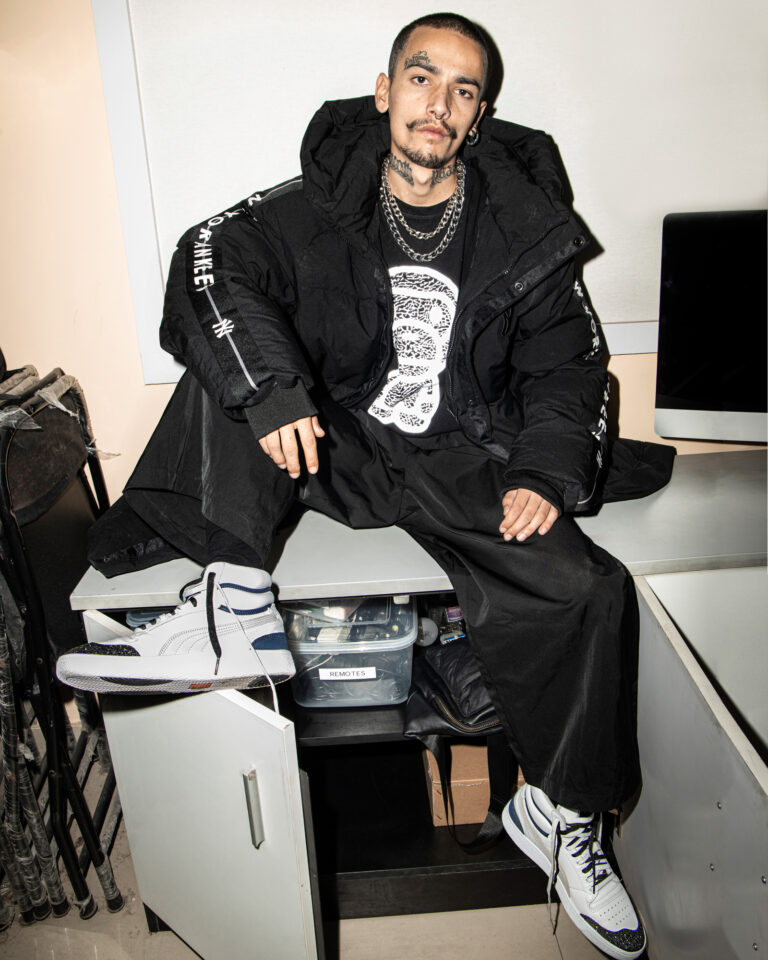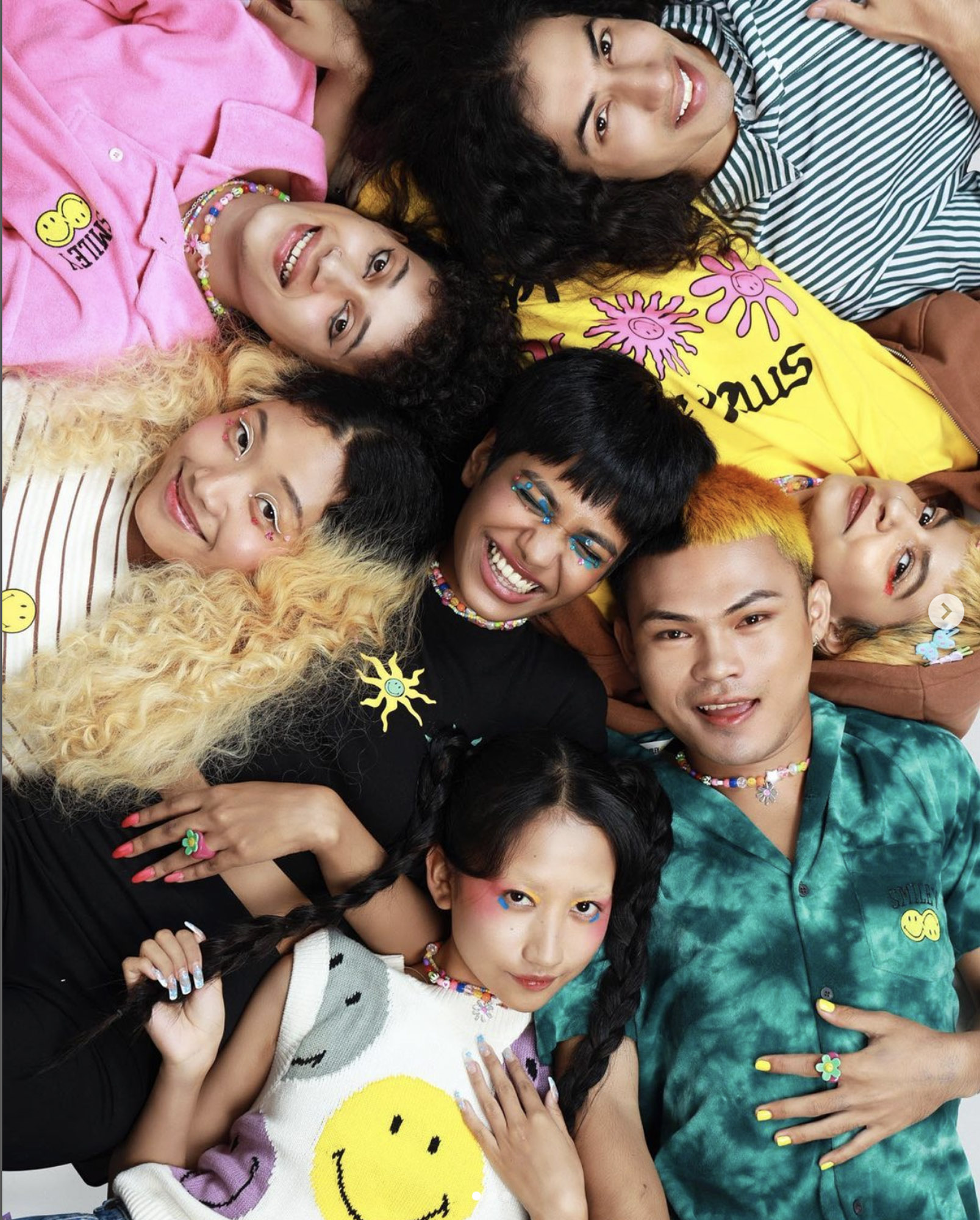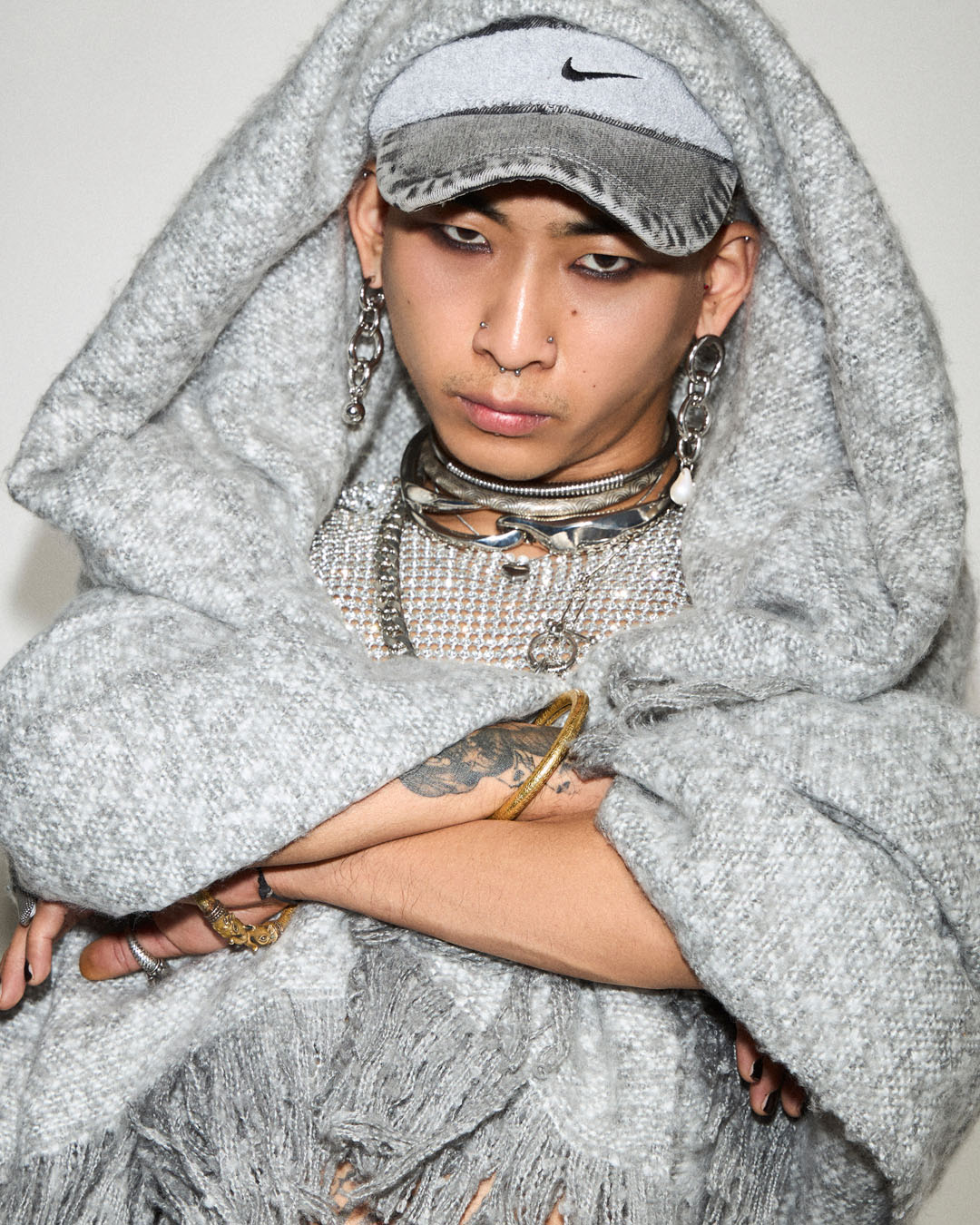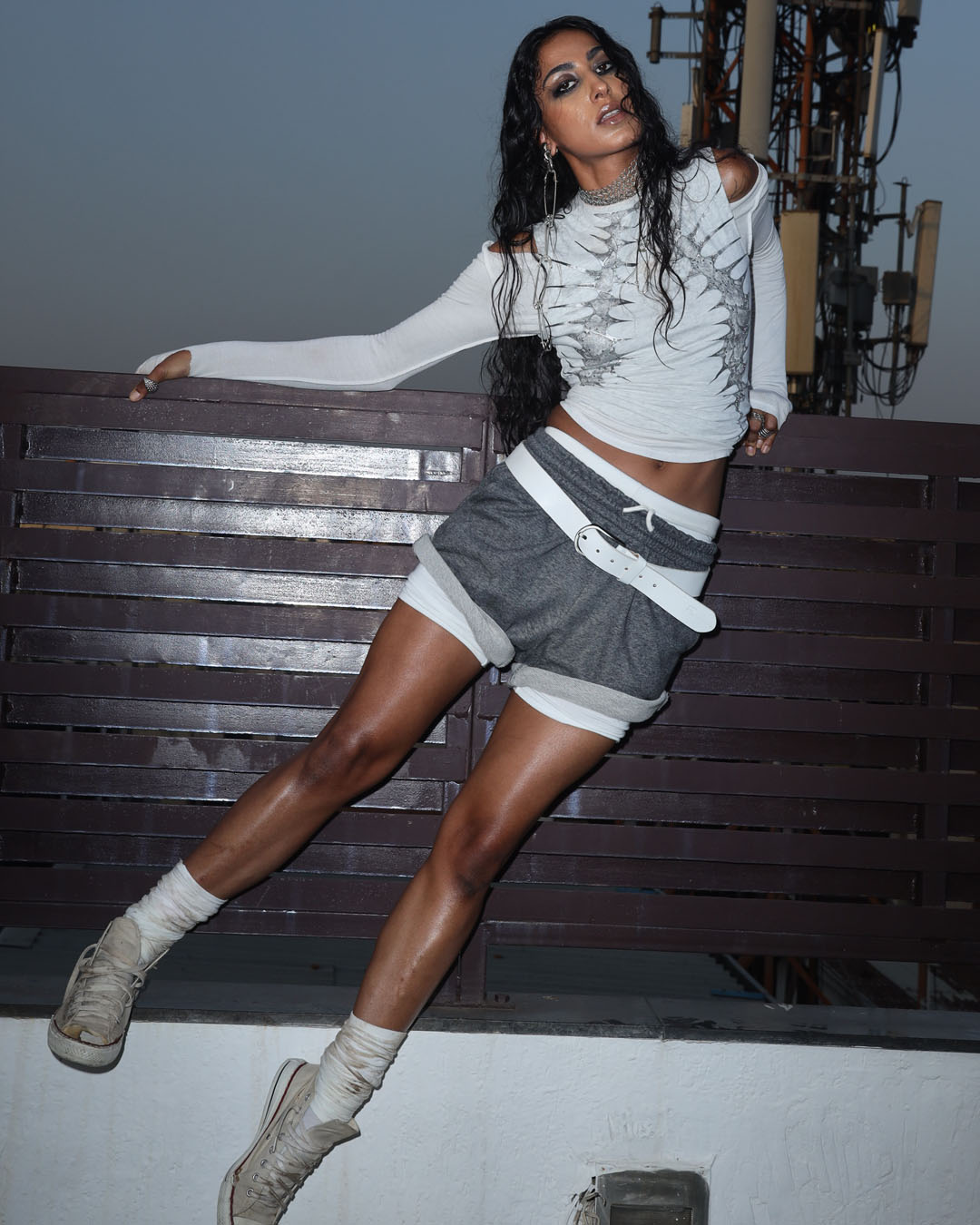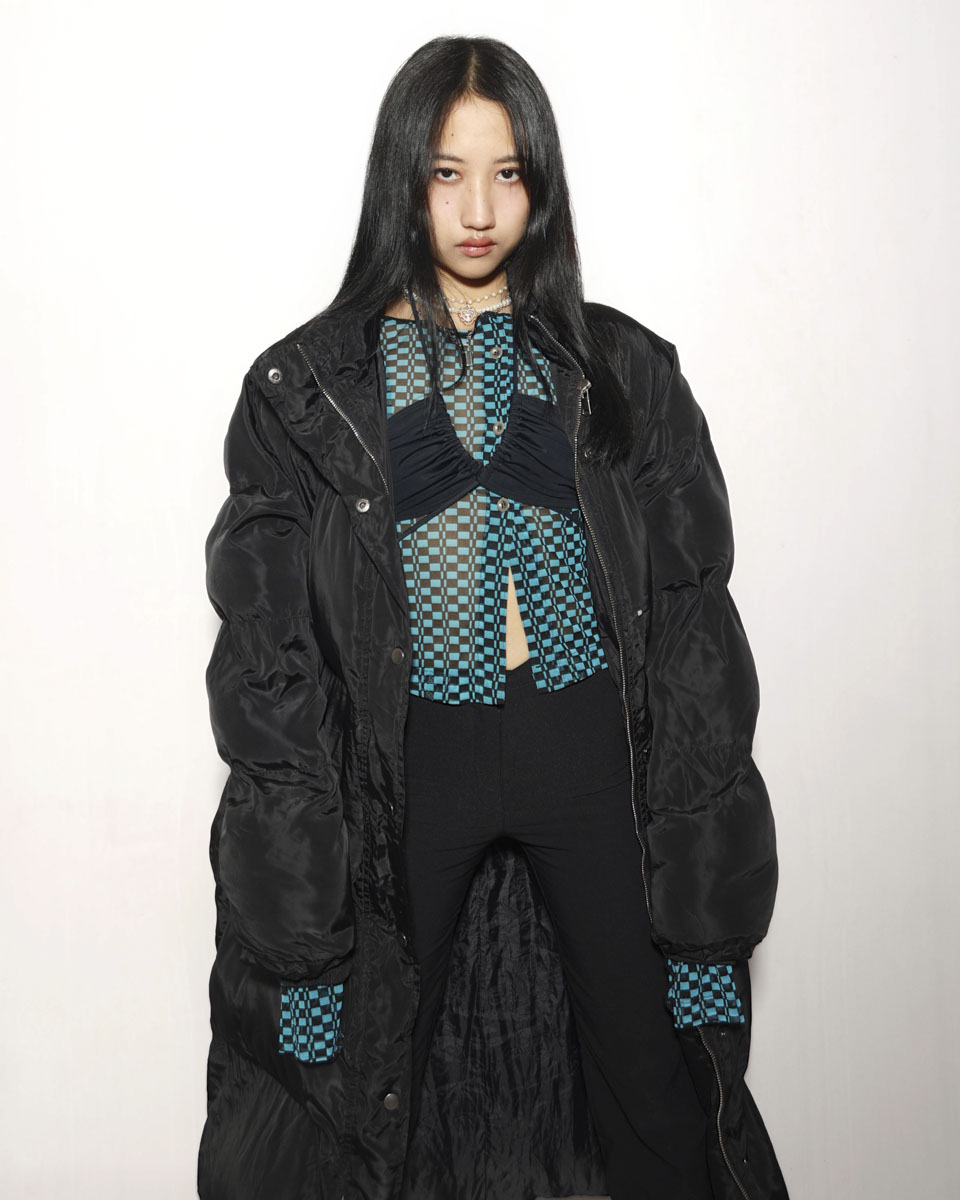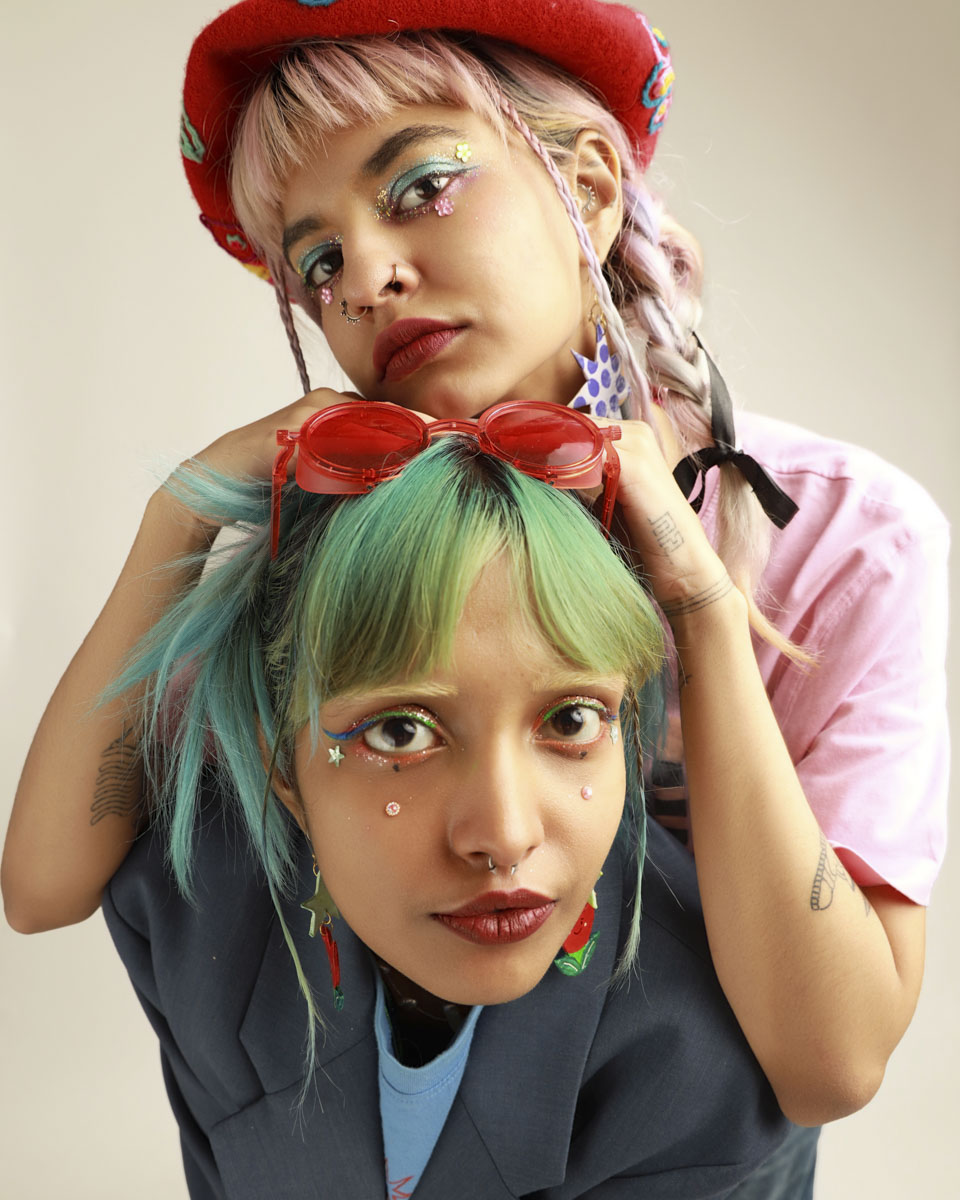“Deconstruction is the new innovation,” says Nishant Fogaat, who defines himself as an unorthodox designer and conscious consumer, and who designs everything with the intent of being able to wear his creations. Nishant has been consistent with his designs and keeps experimenting with new ideas, and his skills are not limited to sneakers. His creations have the kind of innovation and refinement that it’s hard to differentiate his end products from the ones on shelves.
We chat with @fogaat about his inspirations, recent collabs, and future goals.
Featuring @virat_negi96
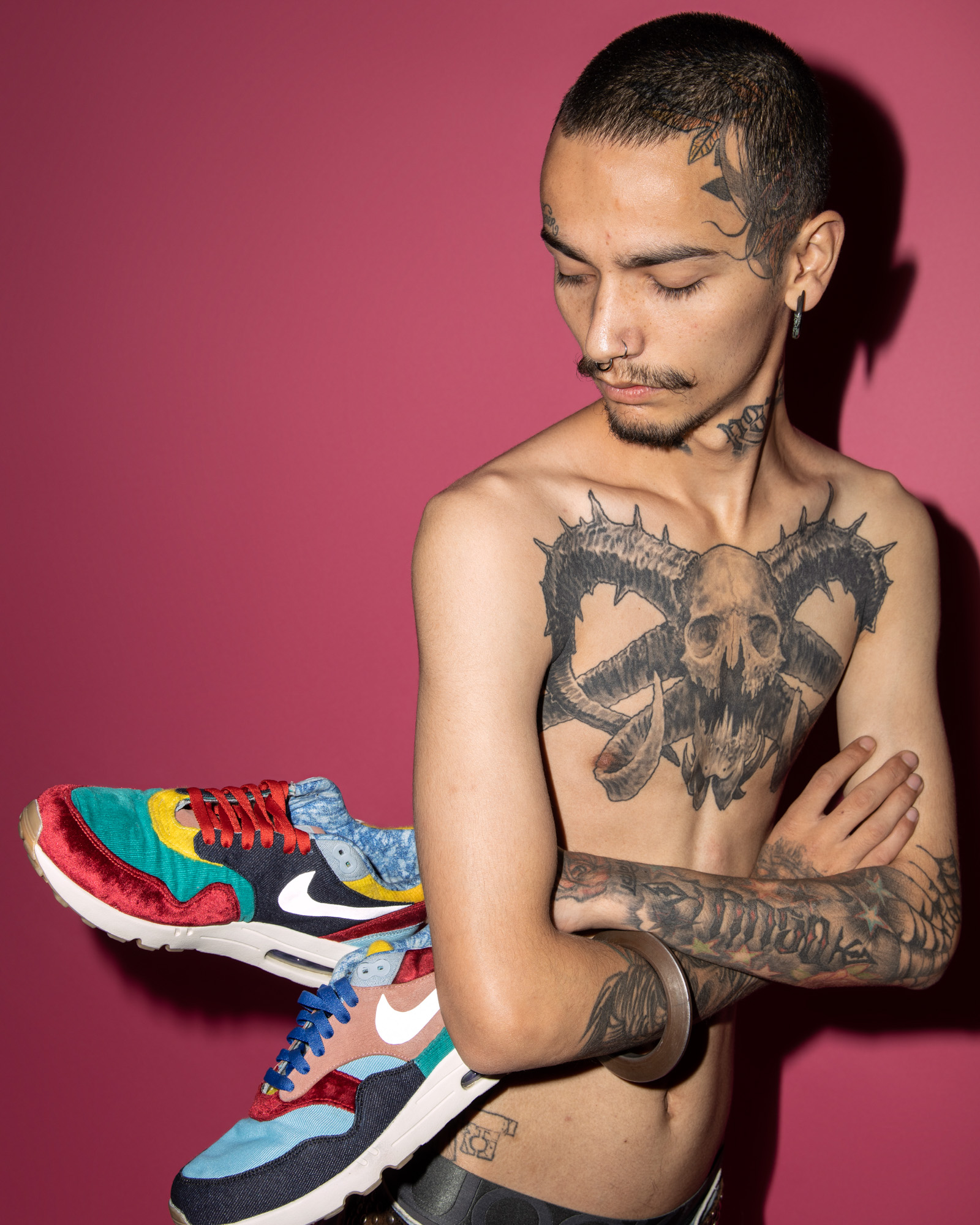
Q. Where does the need for customization come in? Especially with major brands dropping new designs in multiple colorways almost every week, and some with limited drops for that saught after ‘exclusivity’?
Nishant: Limited drops of sneakers and multiple SKUs of the same redundant process every week by brands as Hot Weekly Releases is just an onset of more terrible times to come to already prevailing fast-fashion times. I would love to see the idea of people being able to buy basic core products and having the option to make a bespoke, a more meaningful product with a higher product lifecycle too.
It would be a dream come true if people can just come to the design center and create within an hour or so, the ideal sneaker of their choice, and turnaround the current supply chain industry. By doing so, the consumer will have a more fond connection with the footwear they create while trying to support their local design center at only a fraction of the original they end up paying with multi-fold markups to retail brands.
Q. Tell us about these sneakers
Nishant: AIR MAX 1 ‘Factory Floor’. Made from factory floor scrap fabrics. I cut open Air Max Textile 2.0 to retrieve the outsole and pattern, made patterns from the shoe upon deconstruction, sourced fabrics and materials as per the mood board and the story. I stitched the complete shoe from scratch, shaped the shoe upper on a sneaker last of size 27cm and glued the upper to the outsole with temperature treatments.
Q. Which brand was the first to get in touch with you, appreciate the art and support it?
Nishant: Nikhil Pandit, who was part of the Nike India marketing team was the 1st person to connect with me. One of the reasons for it could be me being able to make my first of many sneaker SnapBacks out of Nike shoes. One thing I learned from my mother was to believe in myself and my craft and be honest about it before others could believe in me. I never requested any sneaker brand for free seeding to help me channelize and monetize my reimagined products before having caught their attention. I always believe associating and collaborating is more about people and less about the brands. I am proud to have a great working relationship with people at Puma India who in the past were working for a brand that I never wanted to associate with but we still shared good relations with nonetheless.” .
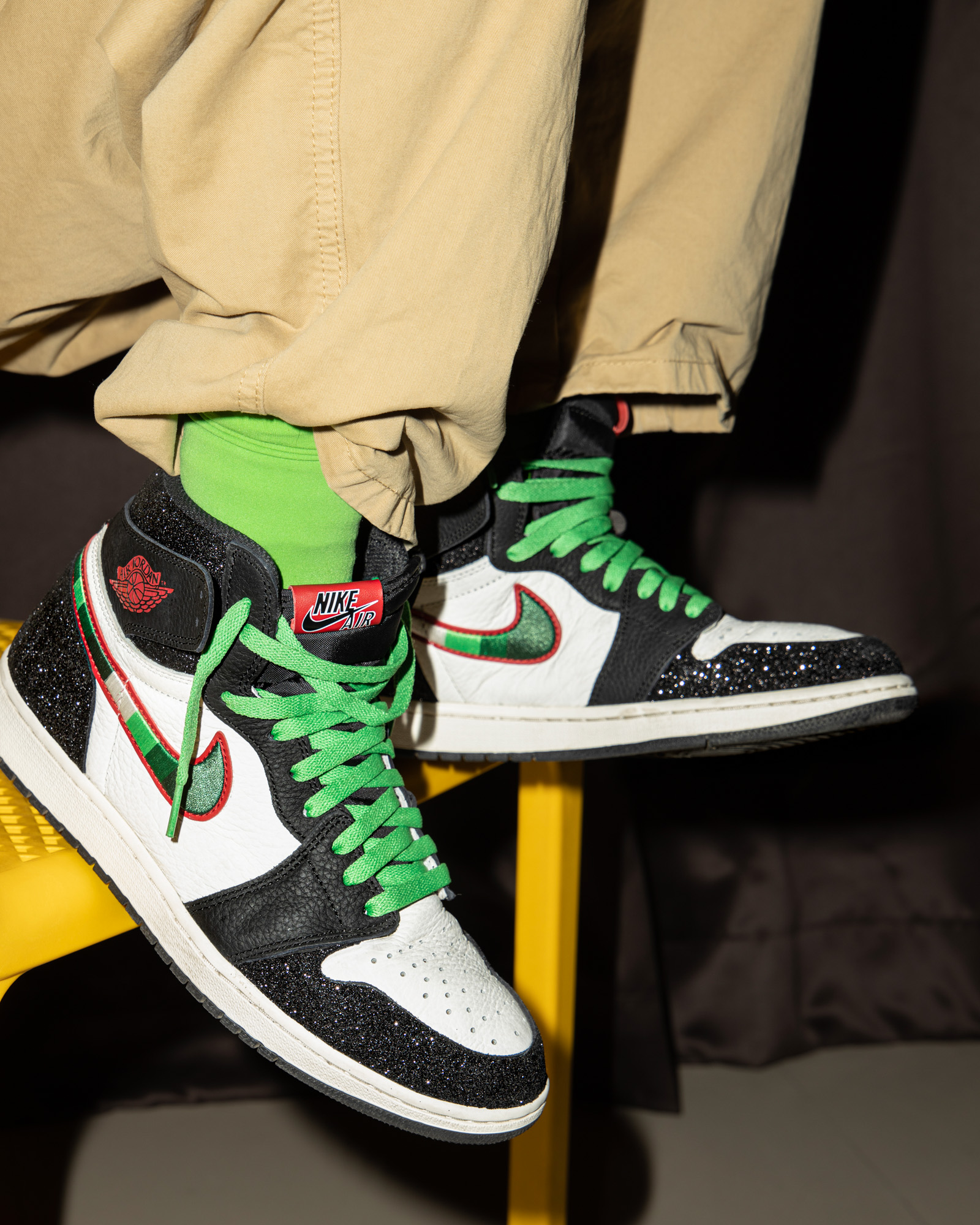
Q. Tell us about these sneakers:
Nishant: Air Jordan 1 ‘Black Pearl’: I reimagined the Air Jordan 1 while adorning the heel, ankle & toe of the sneaker with Swarovski crystals yet retaining the colorway balance. I deconstructed the upper of the Air Jordan 1, made patterns of the selective using parts as per the digital mock render. Cut and prepared materials using Swarovski crystal fabrics. I also replaced and thermal bonded the panels together. Finished it off with clear lacquer varnish on the Swarovski crystal area for more lasting shine and finish.
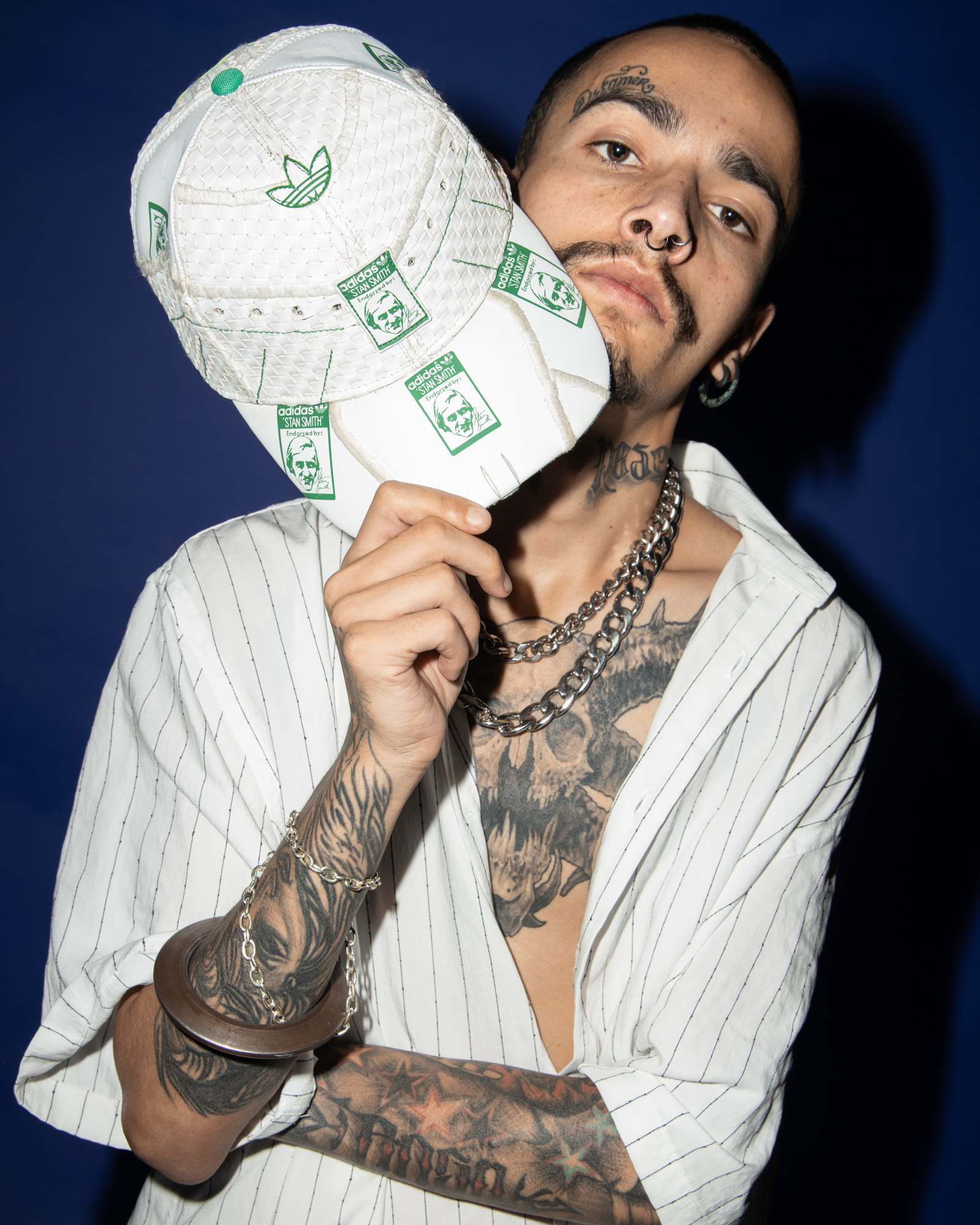
Q. Tell us about the SnapBack
Nishant: The ‘Stan Weave Snapback’. I sourced three woven pairs of Adidas Stan Smith from Atmos Tokyo outlet, deconstruct the shoes and redesigned the shoe upper as per the cap pattern. I stitched the brim & upper panels of the cap along with snapback trims and finished the cap on a New Era pneumatic heat press machine.
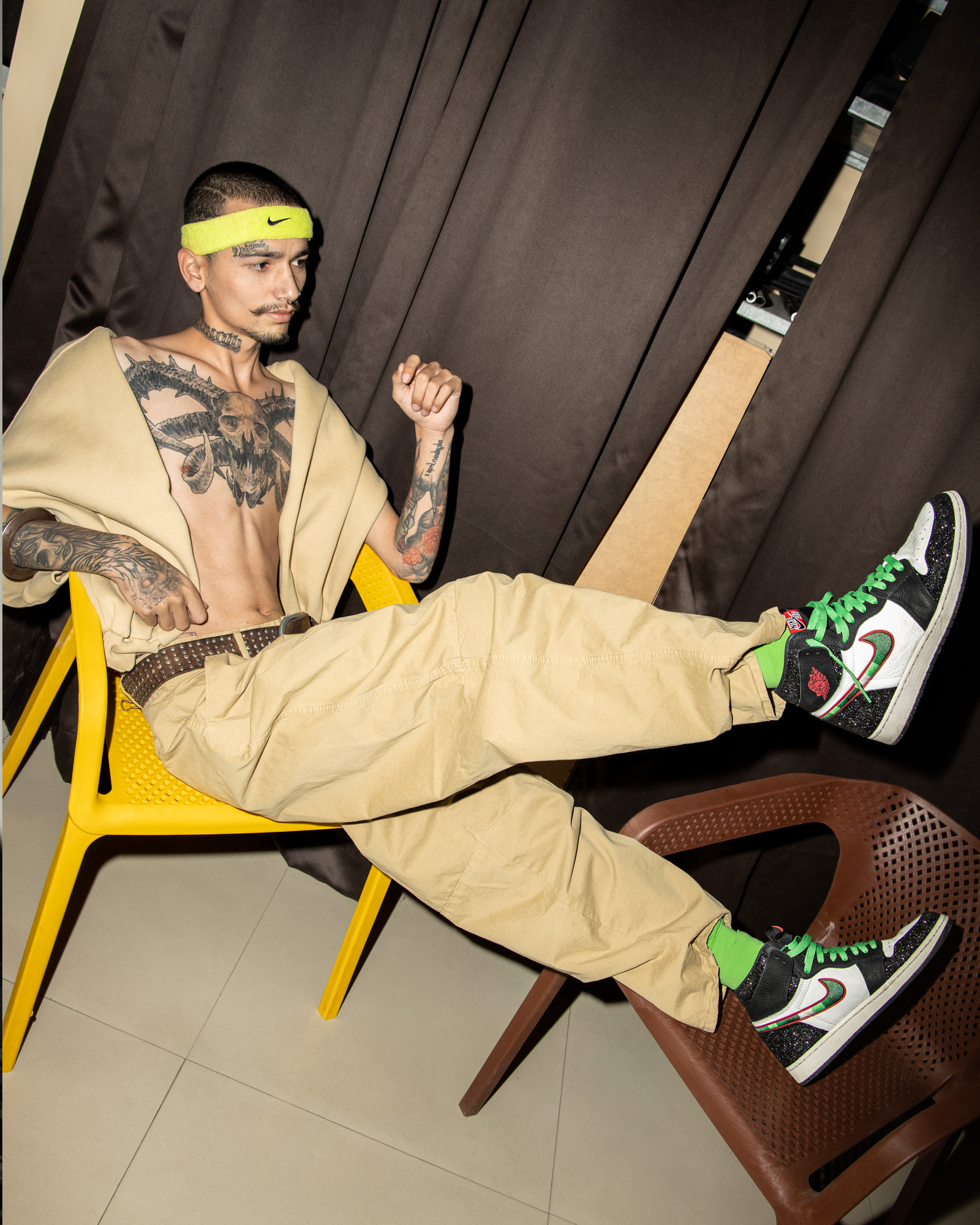
Q. Which was your most memorable collaboration yet?
Nishant. The most memorable brand collabs have to be two, and for two equally strong reasons:
1) Creating sneaker art in the form of a sneaker SnapBack for the opening of Nike India’s 1st ever Kick Lounge where I could help exhibit the elemental analysis of a shoe for Nike’s Kicks Lounge as a permanent store fixture. What made it special was to see myself contributing to the brand as an artist whilst it was a dream of being a key contributor to the growing design and fashion/sneaker society of the country.
2) Creating a capsule collection with three reimagined products with Puma India for the launch of the Puma RS-X in India. I had to create a sneaker SnapBack, a sneaker mask & a sneaker eco bag teddy. This one challenged me to see the same product, the same silhouette of the RS-X in three different ways to create three different products.
I also have to mention that the reason that makes the Puma collaboration one of the most special is that it was the first time I was collaborating with a major brand after starting out as an independent designer. It also started an actual fondness for the brand and partnership with Puma India. I believe that collaboration is never about brands but about the people, the energy and if they actually appreciate and understand the art and most importantly respect the artist. The energy of people at Puma India is exemplary, and of no match to any brand or company, I have ever collaborated or been employed with.
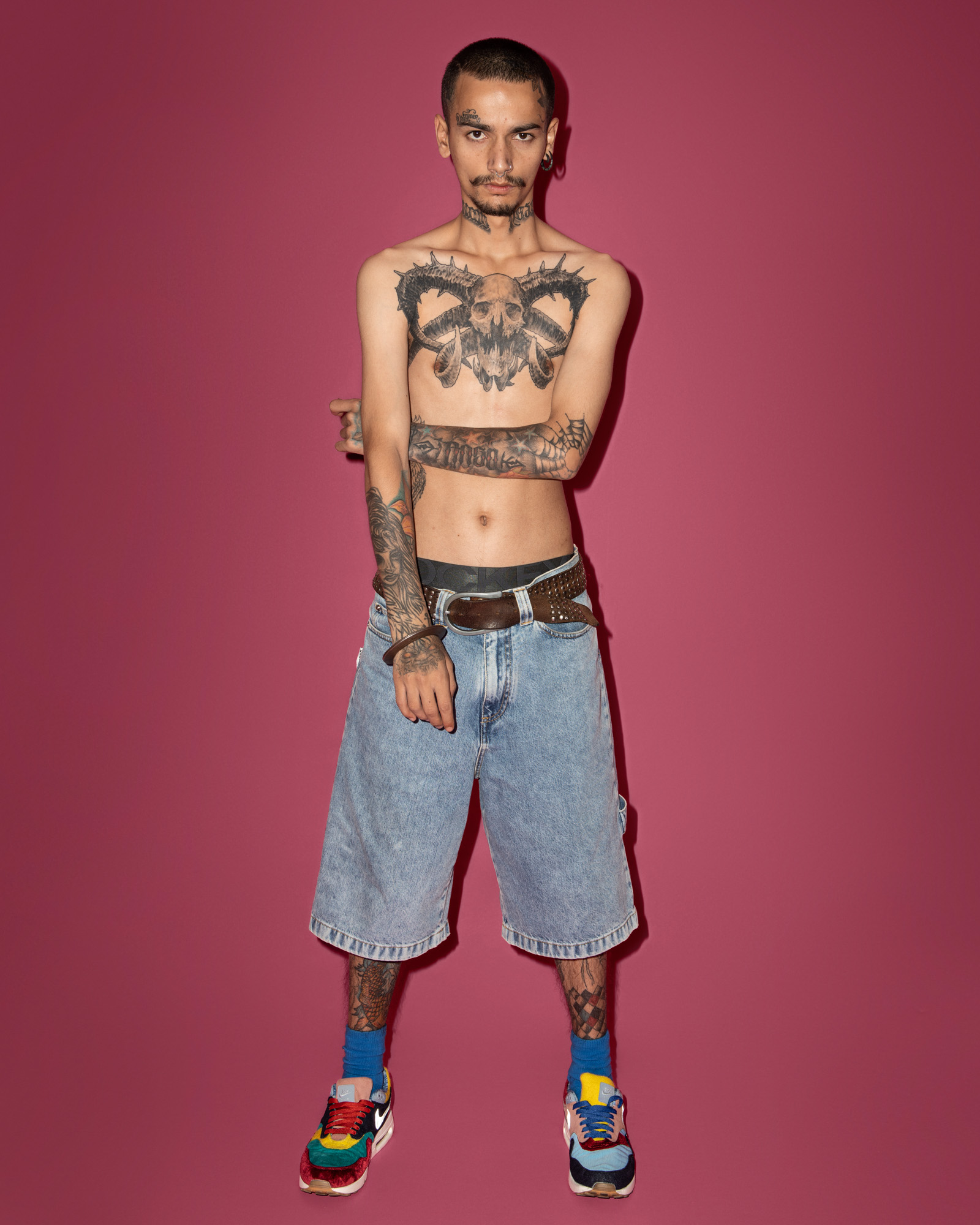
Q. Who/what has been the inspiration behind what you do?
Nishant: The concept of Mottainai has been one of the key driving forces in my design process and, more importantly, I see myself as a reflection of good/bad design and the key things I have absorbed from people and the design ecosystem around me. I get inspired by street culture leaders like Nigo from Japan just as much as I get inspired from everyday hustlers making both ends meet while working in a workshop or a sweatshop in old Delhi.
Q. Do you sell your artwork? Can people pay for a pair of custom shoes?
Nishant: You should get a custom shoe and pay the price for it if you truly understand the value of the product, the craftsmanship and the time that has gone into making the product. I do sell my custom art but I am very selective regarding who receives it. I refrain from making things for people to whom it does not matter the story or the hard work put into it and also to those who buy just to keep up with trends or show off on the gram.
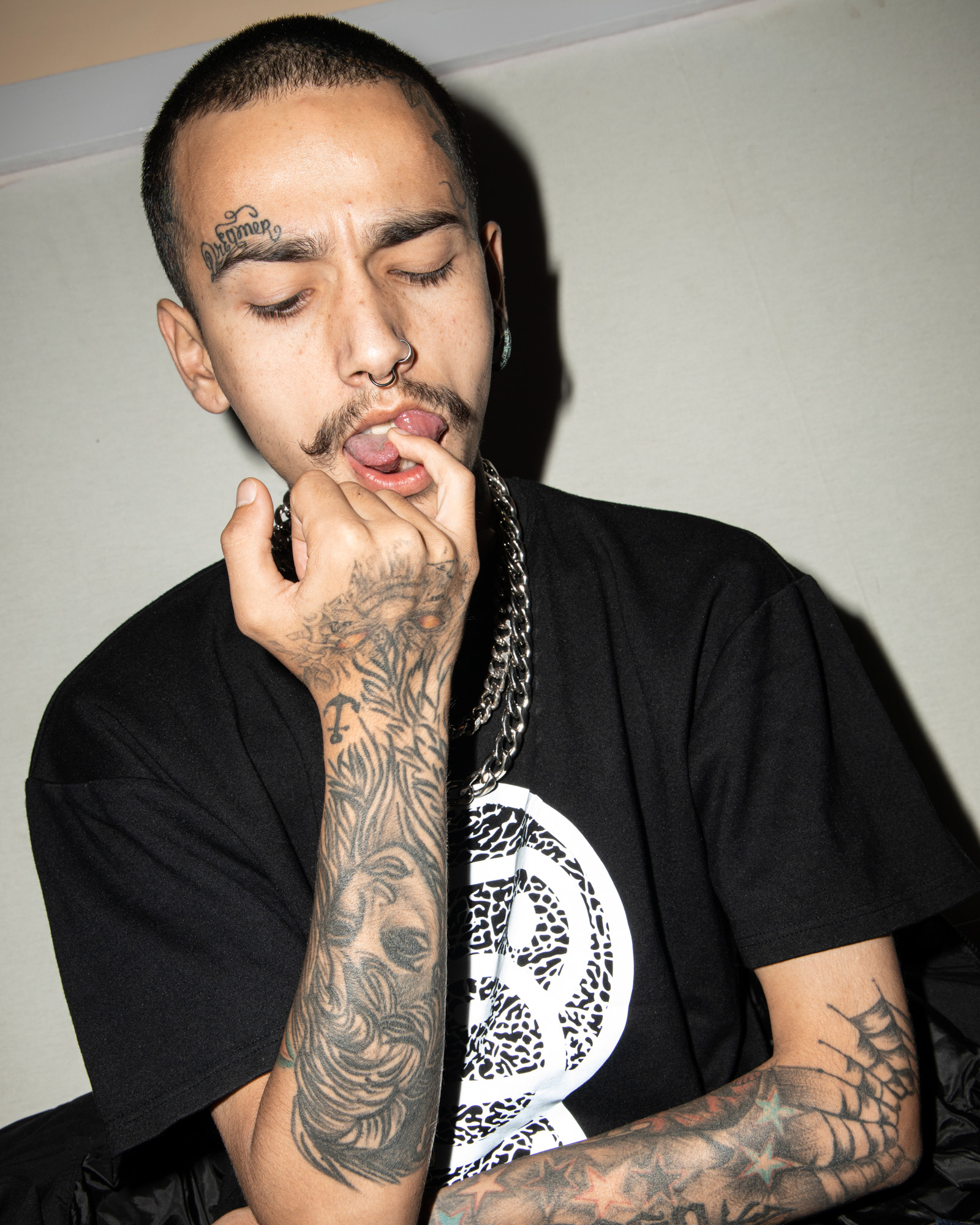
Q. Tell us about this T-shirt
Nishant: The ‘Saru Reflective’ T-shirt is made using neoprene blend fabric. I designed the artwork using Nike’s elephant print onto a baby monkey artwork. I plotted and cut the design to a 3M material and transferd the design onto the Tee
Q. When did you first realize you wanted to do this and at what point did you realize you can do this professionally?
Nishant: While I was studying fashion, I always knew the difference between the actual cost vs retail market price. And that usually kept me interested in buying less and making more meaningful products even if for myself. As a fashion student, to see myself wear the same products just like others who may not have professional garment construction skills challenged me to create things or personalize my wardrobe. And I still do the same. I want to wear and create things that are meaningful and have a story and a purpose. I strongly believe that ‘less is more’, and that we don’t need to buy every new shoe and apparel the brands try to market as ‘hot release’ every week. It will only add clutter to your closet and personality. Instead, we should invest in things that will last and have a meaning and a purpose. Even if the purpose is to add to your personal style, don’t buy for the hype of it.
Q. What advice would you give to those who want to get into this and take the as a career?
Nishant: One strong advice is to learn the nuances of the trade, not just the superficial digital skillset. Being a self-taught designer will help because you cannot rely on your tailors. You can always learn and exchange key design insights and mix it with their craftsman if at all they are not proficient to create on their own. Learning is not attained by chance or as a hobby, it must be sought for with ardor and diligence. And that’s what differentiates a hobbyist from a pro craftsman.
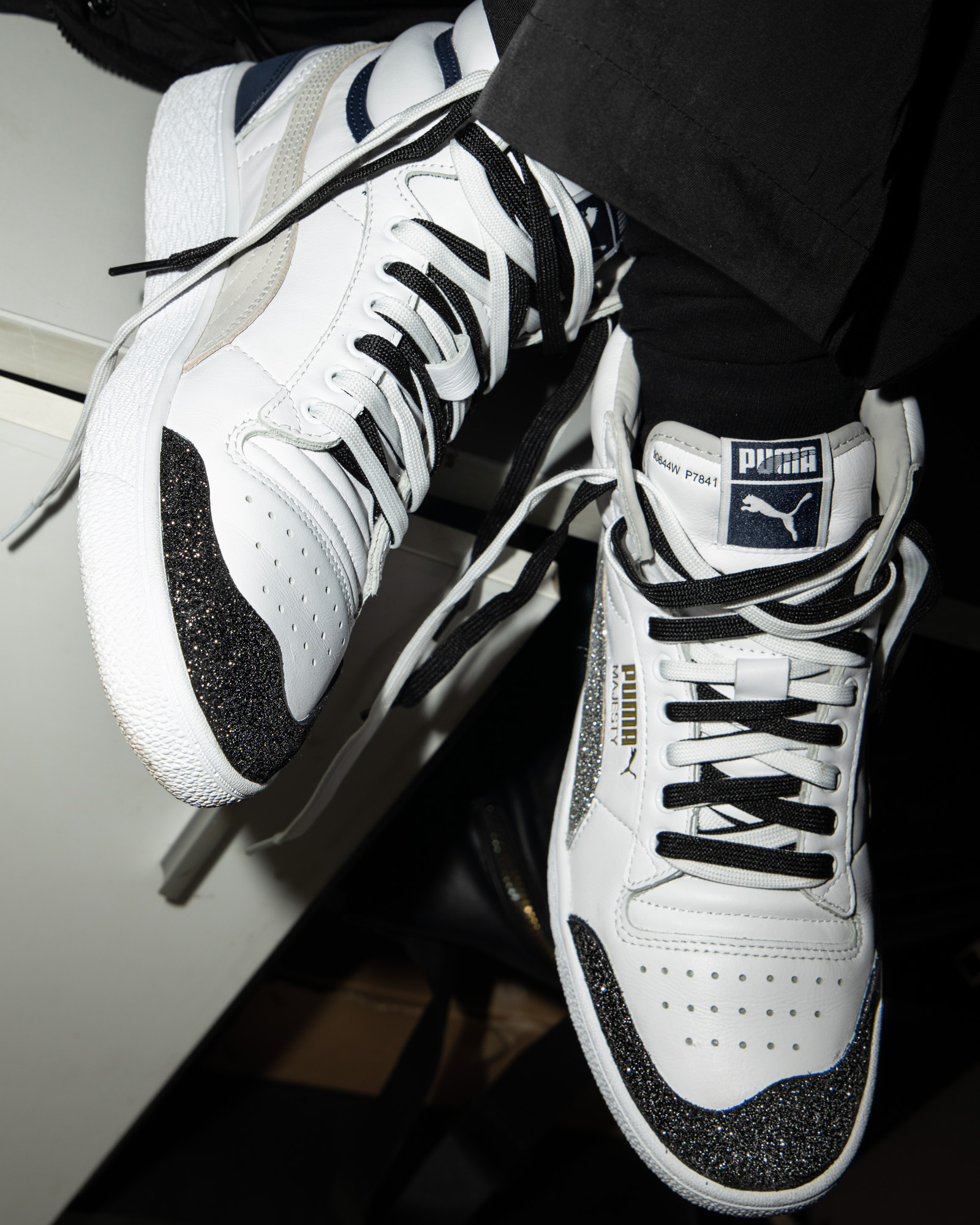
Q. Tell us about these sneakers
Nishant: I did the paint and render on an actual pair of Puma sneakers in a color scheme designed as per render. I then redesigned and transferred Swarovski Crystal fabric onto the upper by scoring the pattern from the upper and replaced it with Swarovski fabric. Finally, I painted the suede with oil paints and replaced the lacing with double alternate lacing colorway.
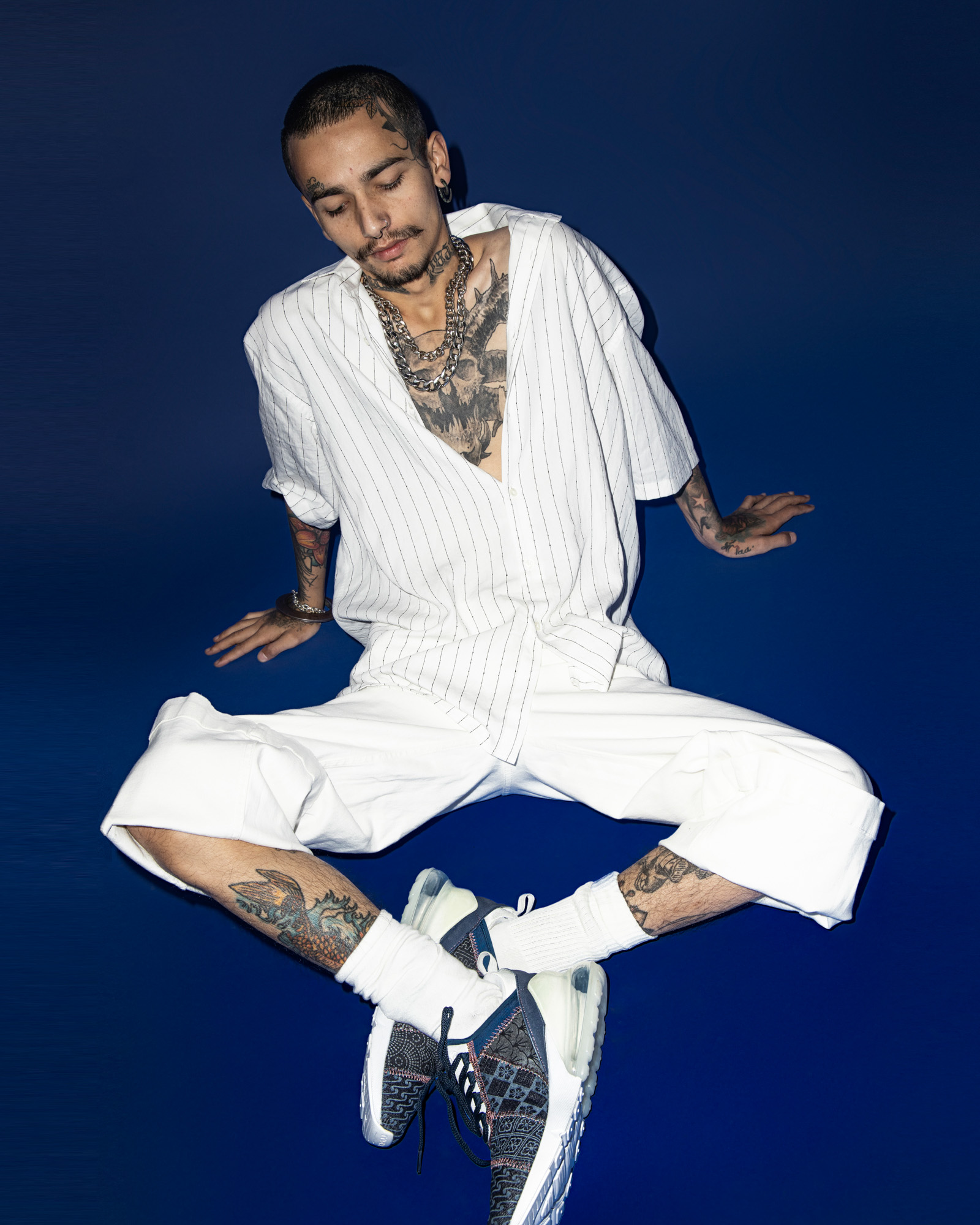
Q. Tell us about these sneakers
Nishant: The ‘Laser Kimono Air Max 720’. I cut open an actual air max 720. Made patterns from the deconstructed sneaker. Digitally rendered and re-designed the actual pattern of the shoe. Made denim upper in kimono prints using laser bleaching technique for perfect precision. Laser burn prints over any fabric and cut patterns from the denim as per the mock, stithced the patterns, stithced the sneaker and finished the upper as per the shoe last of 28cm.
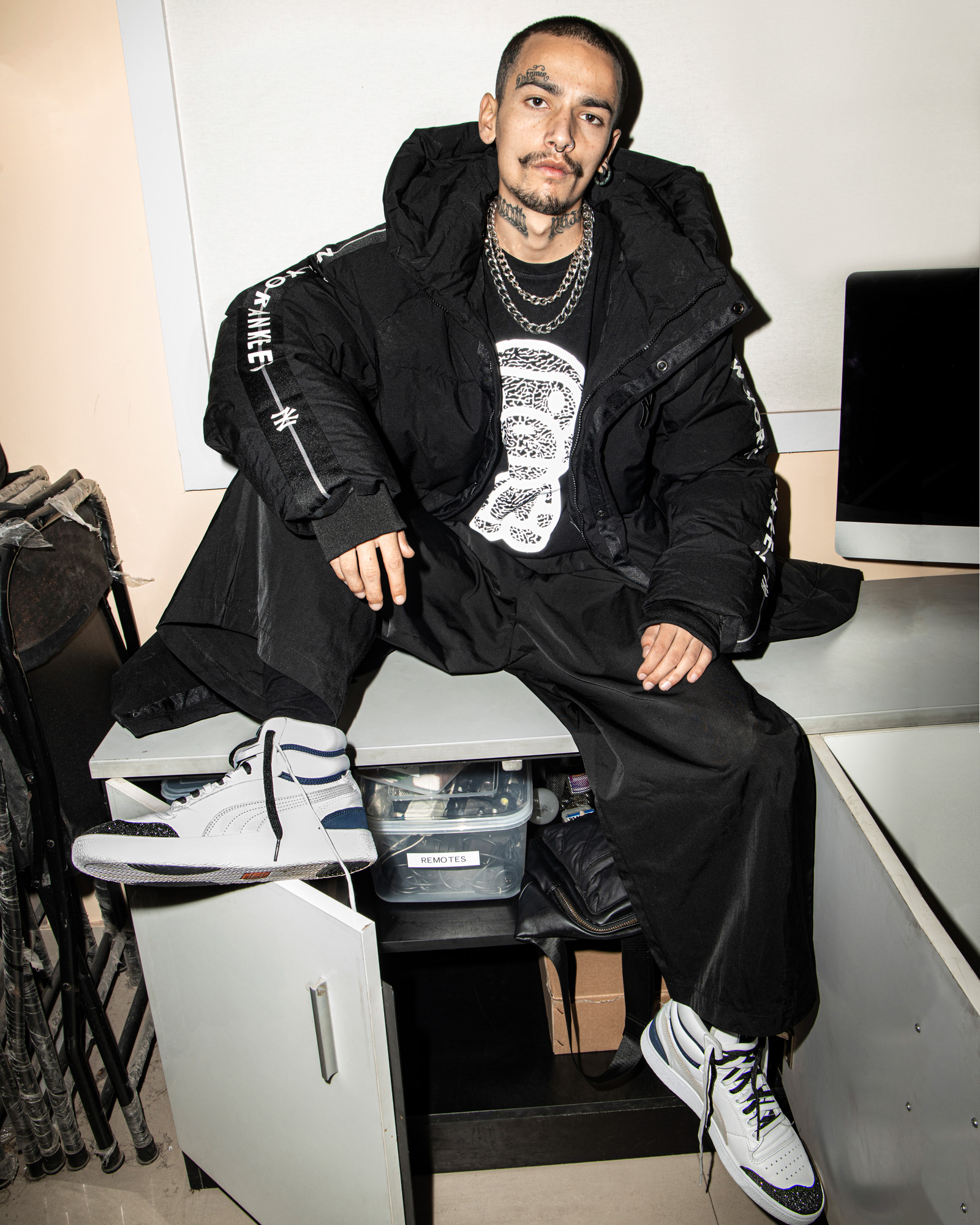
Q. What are the five basic steps every beginner should know about sneaker customization?
Nishant: 1) Designing has no shortcut.
2) Don’t create to conform to what’s in trend. Create something with a purpose.
3) Having role models might work for some, but don’t succumb to the idea of idols too much to lose your thoughts, ideas, and originality.
4) Try to study the basics and do your design homework before starting to take up this hobby/profession. It’s quite sad to see when newbies call themselves a paint customizer yet failing to understand the difference between different ink media and unable to control the brush strokes.
5) Plan, Act, Fail(fast), Adapt, Evolve (repeat)
Q. Your dream collab?
Nishant: The chase/dream never ends but one of my key dreams is to make sneakers more than a trend based thing. Also to make footwear affordable for people where anyone could make their own shoes just by using a service industry app (Uber of the sneaker world), where one can make their own shoe without having to pay a huge premium in the form of brand marketing or overhead markups but with a very small percentage to the footwear production craftsman to help sustain the industry and support the locals. I would also want to see Nigo in my shoes. Last but not least, I would love to see myself making sneakers as a resident designer with an international footwear brand so that I can reach and create for a bigger audience.
Q. Where do you see yourself in the next 5 years?
Nishant: I see myself as a key spirit in the Indian and global design scene for sneakers.

